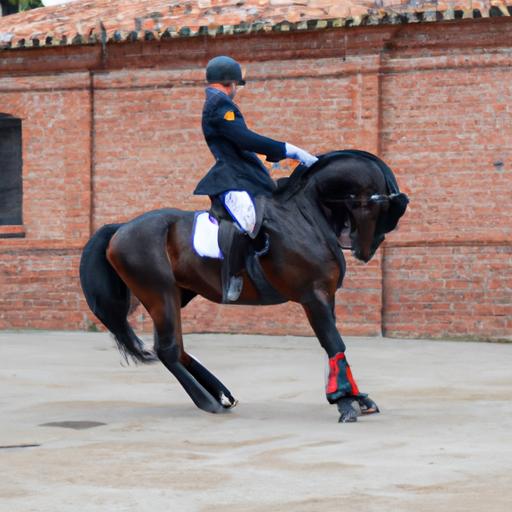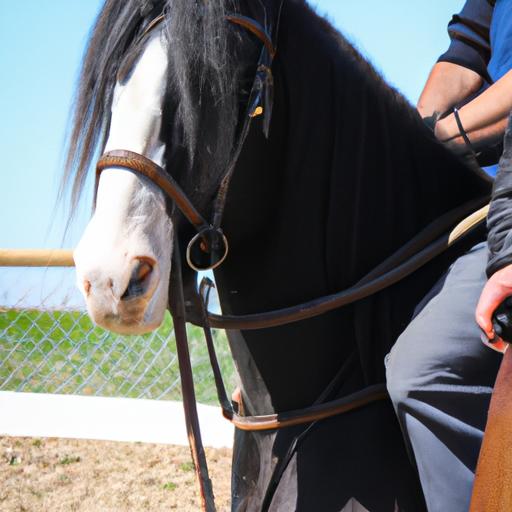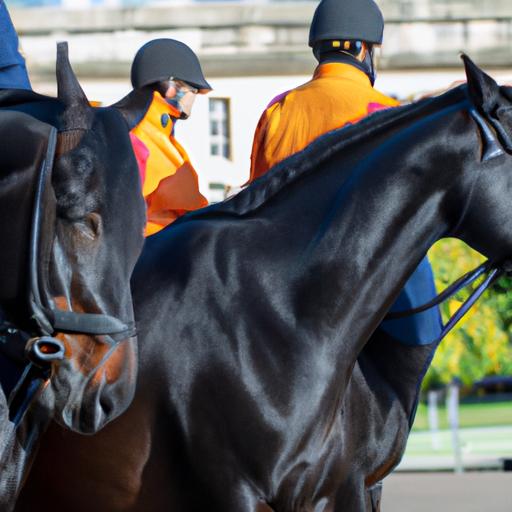Discover the world of mounted police horse training. Explore the importance of proper training for these noble creatures in maintaining law and order.
Introduction
Horses, majestic creatures with strength and grace, have long played a vital role in law enforcement. Mounted Police Horse Training brings together the power and intelligence of these magnificent animals with the skills and expertise of dedicated officers. In this article, we will explore the captivating world of mounted police horse training and discover why proper training is crucial for these noble creatures.
Overview of Mounted Police Horse Training
Mounted police units have a rich history, tracing back to ancient times when cavalry was an integral part of military operations. Today, these units serve as a symbol of authority and a powerful force in maintaining law and order. Mounted police horses undergo rigorous training to become reliable partners for their human counterparts.
Importance of Proper Training for Mounted Police Horses
Imagine a mounted police officer on patrol, maneuvering skillfully through crowded streets, or confidently approaching a potentially dangerous situation. The foundation of this remarkable partnership lies in the extensive training received by these horses. Without proper training, the effectiveness and safety of both the officer and the horse would be compromised.
Mounted police horses go through a comprehensive training program that includes basic and advanced skills, equipping them to handle various law enforcement tasks. From crowd control to tactical maneuvers, these well-trained horses become invaluable assets in maintaining public safety.
So, join me in this captivating journey as we delve into the intriguing world of mounted police horse training. In the next section, we will explore the historical roots of these units and how training techniques have evolved over time.
History of Mounted Police Horse Training

A. Origins of Mounted Police Units
Mounted police units have a rich and storied history that dates back centuries. The concept of using horses in law enforcement can be traced to ancient civilizations, where mounted warriors patrolled cities, maintained order, and protected their territories. Throughout history, various cultures, including the Mongols, Romans, and British, recognized the advantages of employing mounted forces for policing purposes.
In the 18th and 19th centuries, mounted police units gained prominence in Europe and North America. The Royal Irish Constabulary established the first official mounted police unit in 1808, followed by the London Metropolitan Police Mounted Branch in 1873. These units paved the way for the development of modern mounted police forces, setting the stage for the training techniques we see today.
B. Evolution of Training Techniques for Mounted Police Horses
Over time, training methods for mounted police horses have evolved significantly, embracing scientific approaches and best practices. Early training focused on basic obedience and horsemanship skills, ensuring that horses were responsive to rider commands and capable of navigating various terrains. However, as law enforcement needs became more complex, training techniques had to adapt accordingly.
Modern training techniques for mounted police horses incorporate a holistic approach that encompasses physical conditioning, desensitization to stimuli, and specialized skills tailored to law enforcement duties. Horses are exposed to a wide range of scenarios, such as loud noises, crowds, and high-stress environments, preparing them to remain calm and focused in challenging situations.
Technology has also played a role in enhancing training methods. Video analysis and simulation tools allow trainers to identify areas for improvement and provide targeted training to address specific challenges. The evolution of training techniques continues to ensure that mounted police horses are better equipped to handle the demands of their roles effectively.
In the next section, we will dive into the fundamental training aspects for mounted police horses, exploring the selection process and the groundwork required to build a strong foundation.
Basic Training for Mounted Police Horses

Mounted police horses undergo a systematic training program that lays the foundation for their law enforcement duties. This training encompasses various essential aspects, ensuring the horses are well-prepared for their roles. Let’s explore the key components of basic training for mounted police horses.
A. Selection and Evaluation of Horses
The first step in training a mounted police horse is the careful selection and evaluation process. Not every horse is suitable for this specialized work. Horses chosen for this role need to possess specific traits such as intelligence, athleticism, and a calm temperament. Evaluating potential horses involves assessing their physical condition, soundness, and overall suitability for the demanding tasks they will encounter.
B. Groundwork and Obedience Training
Groundwork and obedience training form the building blocks of a well-trained mounted police horse. During this phase, the horses learn basic commands, respect for their handler, and develop trust and communication skills. Groundwork exercises include leading, halting, backing up, and responding to voice commands. This foundation establishes a strong bond between the horse and the officer, creating a harmonious partnership.
C. Desensitization to Crowd and Noise
Mounted police horses often find themselves in bustling environments with noisy crowds. To ensure they remain calm and focused in such situations, desensitization training is crucial. Horses are gradually exposed to various stimuli, including loud noises, large crowds, and unusual objects. Through patient and systematic exposure, they learn to remain composed, ignoring distractions and staying responsive to their rider’s cues.
D. Basic Riding Skills and Equitation
Developing solid riding skills and equitation is paramount for mounted police horses. Officers must have precise control over their mounts, even in challenging scenarios. Horses undergo training to master essential riding techniques such as turning, stopping, and backing up. They learn to navigate obstacles and maintain balance at different speeds. Proper equitation ensures the horse can carry the officer effectively and comfortably, minimizing strain and maximizing efficiency.
In the next section, we will delve into the advanced training that takes mounted police horses to the pinnacle of their capabilities. Stay tuned to discover the specialized skills and tasks these remarkable animals undertake.
Advanced Training for Mounted Police Horses

A. Tactical Training for Law Enforcement Situations
In high-pressure law enforcement situations, mounted police horses must exhibit exceptional poise and agility. Tactical training focuses on preparing these noble animals to navigate challenging terrain, respond to sudden movements, and remain calm amidst chaos. By exposing them to simulated scenarios, such as loud noises or unexpected confrontations, horses develop the ability to remain composed and assist their riders in maintaining control over volatile situations.
B. Crowd Control Techniques
Crowd control is a critical aspect of mounted police work. Horses, with their imposing presence, provide a unique advantage in managing crowds effectively. Through specialized training, horses learn crowd management techniques that allow them to create a visible and authoritative presence, helping disperse crowds or maintain order during large gatherings or protests. They are taught to remain steady while surrounded by commotion, ensuring the safety of both the officers and the public.
C. Obstacle and Agility Training
Mounted police horses encounter various obstacles in their line of duty, ranging from urban environments to natural terrains. Obstacle and agility training is essential to prepare these equine partners for navigating challenging landscapes with confidence and dexterity. Horses are trained to overcome barriers, such as jumps, water hazards, and narrow passages, enabling them to maneuver swiftly and safely in any environment.
D. Training for Specialized Tasks (e.g., Search and Rescue, Riot Control)
Mounted police units often undertake specialized tasks, such as search and rescue operations or riot control. Horses undergo specific training to adapt to these unique assignments. For search and rescue, horses learn to negotiate difficult terrains, locate missing persons, and remain calm in unpredictable situations. Riot control training equips horses to handle aggressive or agitated crowds while maintaining control and minimizing potential injuries.
In the next section, we will explore the crucial aspects of caring for mounted police horses. From nutrition and health care to proper equipment maintenance, these factors ensure the well-being and longevity of these remarkable animals.
Care and Maintenance of Mounted Police Horses
Mounted police horses are not only highly trained athletes but also cherished companions. To ensure their well-being and peak performance, proper care and maintenance are paramount. In this section, we will explore the essential aspects of horse care that contribute to the overall health and longevity of these remarkable creatures.
A. Proper Nutrition and Health Care
Just like any athlete, mounted police horses require a balanced and nutritious diet. A carefully planned feeding regimen ensures they receive the necessary nutrients to support their physical demands. High-quality forage, supplemented with appropriate grains and minerals, forms the foundation of their diet. Additionally, access to clean water at all times is crucial for proper hydration.
Regular health care plays a vital role in keeping these horses in top condition. Routine vaccinations, deworming, and dental care are essential to prevent illnesses and maintain their overall well-being. By partnering with experienced veterinarians, mounted police units can ensure that their horses remain healthy and ready for duty.
B. Conditioning and Fitness Programs
To perform at their best, mounted police horses must be physically fit and mentally prepared. Conditioning programs tailored to their specific needs help build strength, endurance, and agility. Regular exercise, including controlled riding sessions and targeted workouts, aids in developing their muscles and maintaining optimal fitness levels.
Simulating real-world scenarios through training exercises allows horses to adapt to various challenges they may encounter on duty. By gradually increasing the difficulty and intensity of these exercises, mounted police horses become better equipped to handle demanding situations with confidence and composure.
C. Importance of Regular Veterinary Check-ups
Regular veterinary check-ups are an integral part of the care regimen for mounted police horses. These check-ups allow professionals to assess the horse’s overall health, identify any potential issues, and provide preventive care. Through thorough physical examinations, vaccinations, and diagnostic tests, veterinarians can ensure early detection and prompt treatment of any health concerns, enabling the horses to perform at their best.
D. Tack and Equipment Maintenance
Proper maintenance of tack and equipment is crucial for the safety and comfort of both the horse and rider. Regular cleaning, inspection, and repairs ensure that saddles, bridles, and other gear are in optimal condition. Ill-fitting or damaged equipment can cause discomfort or even injuries to the horse, hindering their performance and compromising their well-being.
By prioritizing the care and maintenance of mounted police horses, these dedicated animals can continue to serve their communities with unwavering dedication and excellence. In the next section, we will conclude our exploration by emphasizing the significance of well-trained mounted police horses and the continuous development of horse-rider teams.


